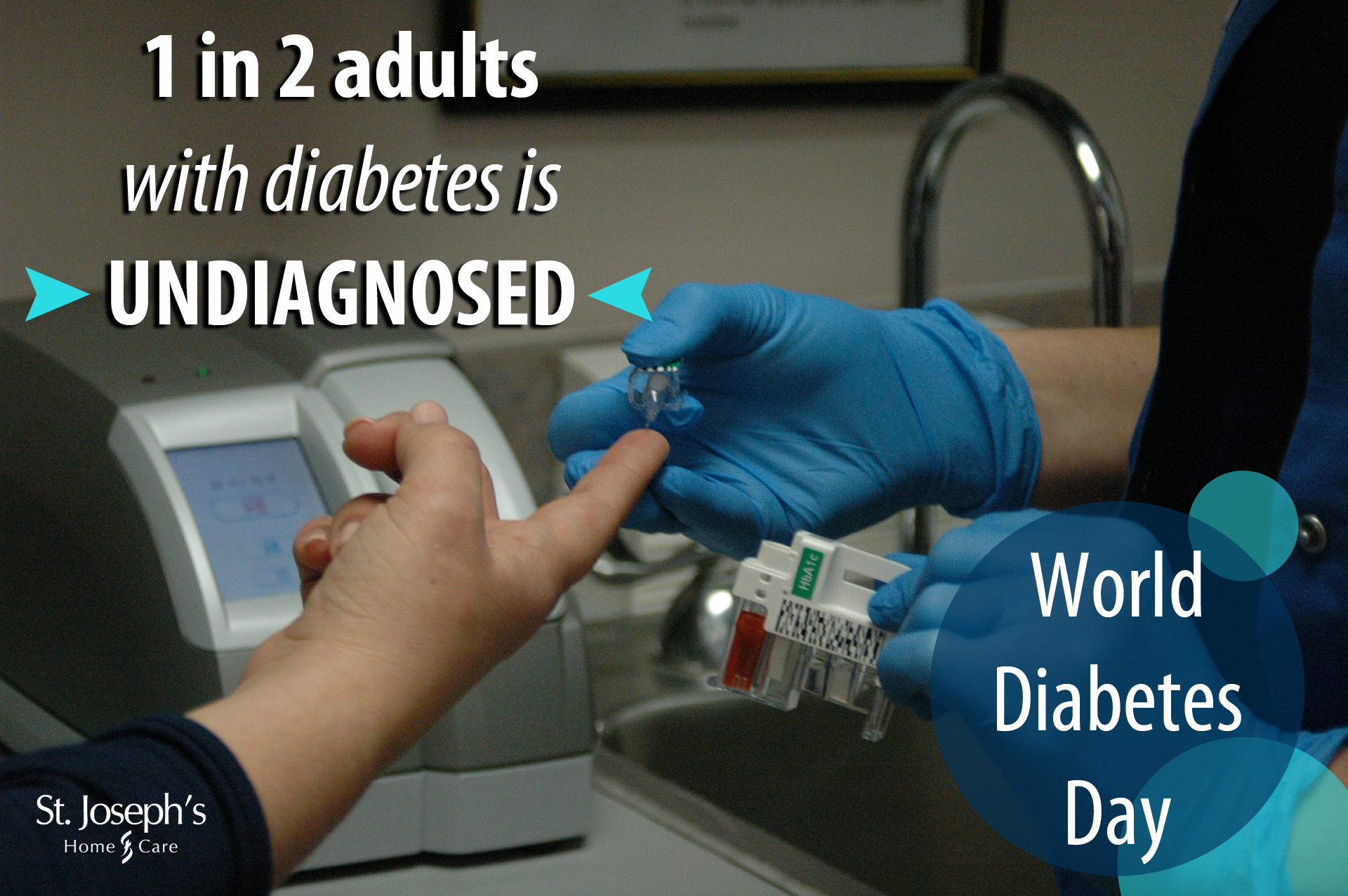
St. Joseph’s Home Care’s (SJHC) visiting nurses provide care to patients with Type 1 and Type 2 Diabetes. Nurses go into schools to support children who usually have been diagnosed with Type 1 diabetes. These children require frequent monitoring of blood sugar levels and assistance with the correct dosage of insulin to ensure they have stable and good control. The care will often include encouragement and age-appropriate diabetes education for the child, support and communication to other health professionals as well as the child’s Diabetes health team, teacher and parents. Diabetes in children is often a challenge to control coupled with growth spurts, changes in activity, illness and peer pressure.
The nurses also assist adult patients who usually have been diagnosed with Type 2. These patients may also be learning to administer or need assistance in the administration of insulin to stable blood sugar levels. Today, SJHC is joining in the conversation to inform and educate people on ways to prevent diabetes and effective management.
It is important to know that Type 1 diabetes is not preventable, but manageable. Type 2 diabetes is preventable through a healthy lifestyle including diet and exercise. Both types of diabetes can lead to other health problems such as circulatory problems, difficulty healing, blindness, cardiac and kidney failure.
This year's theme for World Diabetes Day is 'Eyes on Diabetes,’ to inform the general public to screen for Type 2 diabetes. Screening for diabetes allows for early diagnosis and treatment to reduce the risk of serious complications.
Did you know?
- 1 in 2 adults with diabetes is undiagnosed
- In 2015, 415 million adults were living with diabetes, and by 2040 it is expected to increase to 642 million or one in ten adults
- Increased levels of poor nutrition and lack of physical activity in children causing type 2 diabetes will result in a global public health issue leading to serious health problems
- Careful management of diabetes and screening for diabetic eye disease can help prevent visual impairment or blindness
Find out if you’re at risk of Type 2 diabetes, by taking the online risk assessment here: http://www.idf.org/type-2-diabetes-risk-assessment/


